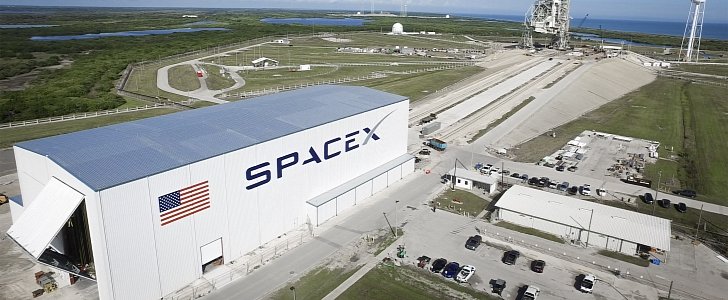NASA is not only depending on the Russian Federal Space Agency for each transport to the International Space Station but it’s also paying a lot of money for each trip. At the moment, it takes $70 million per seat for each ride. This will change soon as the Agency has decided to externalize its flights contracting commercial companies such as Boeing and SpaceX to do the job instead. The latter has just signed for the first manned mission.
That’s a significant step for the space company CEOed by Elon Musk, as it represents the Agency’s approval for SpaceX’s shuttle to be used with astronauts on board. This is the second in a series of four guaranteed orders NASA will make under the Commercial Crew Transportation Capability (CCtCap) contracts. The Boeing Company of Houston received its first crew mission order back in May.
For those who have followed NASA’s news, this contract should not come as a surprise, considering that was the plan ever since the two companies have won the Agency’s competition for a new generation of spacecraft that will shuttle astronauts to the ISS, last year.
“It’s really exciting to see SpaceX and Boeing with hardware in flow for their first crew rotation missions,” said Kathy Lueders, manager of NASA’s Commercial Crew Program. “It is important to have at least two healthy and robust capabilities from U.S. companies to deliver crew and critical scientific experiments from American soil to the space station throughout its lifespan.”
The Agency has yet to determine which of the two companies will fly first, but the procedure implies that the contracts call for orders to take place prior to certification to support the lead time necessary for missions in late 2017, which is the deadline.
Why does the US need the Boeing CST-100 Starline and SpaceX Crew Dragon in the first place? Because it will make the country independent of Russia and will lower the prices per seat significantly.
It was previously reported that SpaceX plan was to reuse the Falcon 9 rocket instead of leaving it blow up with each landing. The company is still testing and developing a sound dock that allows the rocket to be refilled and sent back to space without major repairing. So far, it did not succeed, but the results are promising.
The Agency also detailed that a standard commercial crew mission to the station would carry up to four NASA or NASA-sponsored crew members and about 220 pounds of pressurized cargo. The spacecraft will remain at the station for up to 210 days, available as an emergency lifeboat during that time.
“Commercial crew launches are really important for helping us meet the demand for research on the space station because it allows us to increase the crew to seven,” said Julie Robinson, International Space Station chief scientist. “Over the long term, it also sets the foundation for scientific access to future commercial research platforms in low- Earth orbit.”
For those who have followed NASA’s news, this contract should not come as a surprise, considering that was the plan ever since the two companies have won the Agency’s competition for a new generation of spacecraft that will shuttle astronauts to the ISS, last year.
“It’s really exciting to see SpaceX and Boeing with hardware in flow for their first crew rotation missions,” said Kathy Lueders, manager of NASA’s Commercial Crew Program. “It is important to have at least two healthy and robust capabilities from U.S. companies to deliver crew and critical scientific experiments from American soil to the space station throughout its lifespan.”
The Agency has yet to determine which of the two companies will fly first, but the procedure implies that the contracts call for orders to take place prior to certification to support the lead time necessary for missions in late 2017, which is the deadline.
Why does the US need the Boeing CST-100 Starline and SpaceX Crew Dragon in the first place? Because it will make the country independent of Russia and will lower the prices per seat significantly.
It was previously reported that SpaceX plan was to reuse the Falcon 9 rocket instead of leaving it blow up with each landing. The company is still testing and developing a sound dock that allows the rocket to be refilled and sent back to space without major repairing. So far, it did not succeed, but the results are promising.
NASA still needs to approve the flight before take off
It should be noted that, despite this order, each company must complete a certification process before NASA gives the final approval for flight. Moreover, each contract includes a minimum of two and a maximum potential of six missions.The Agency also detailed that a standard commercial crew mission to the station would carry up to four NASA or NASA-sponsored crew members and about 220 pounds of pressurized cargo. The spacecraft will remain at the station for up to 210 days, available as an emergency lifeboat during that time.
“Commercial crew launches are really important for helping us meet the demand for research on the space station because it allows us to increase the crew to seven,” said Julie Robinson, International Space Station chief scientist. “Over the long term, it also sets the foundation for scientific access to future commercial research platforms in low- Earth orbit.”
.@NASA orders @SpaceX crew mission to @Space_Station. Read details at https://t.co/XGSEOSVuYZ pic.twitter.com/N42GidqN68
— NASA Commercial Crew (@Commercial_Crew) November 20, 2015
